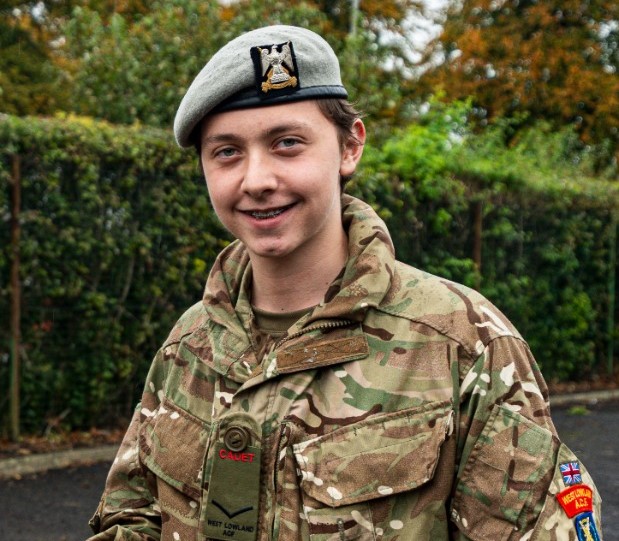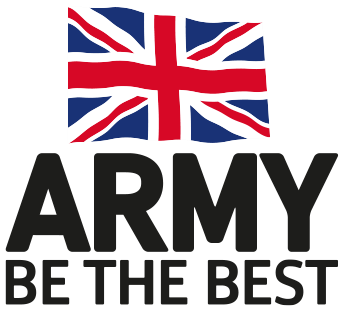
Regardless of which branch they join – Army, Air or Sea – Cadets can learn a variety of practical and life-changing skills. One such qualification that Cadets gain is First Aid, giving young people the knowledge and ability to provide emergency assistance to a sick or injured person in a calm, confident manner.
This was the very situation that Cadet Lance Corporal (LCPl) Max Cardwell, a Cadet from West Lowland Battalion’s Saltcoats Detachment, found himself in recently. After seeing an injured gentleman in need of help, Max quickly put his First Air training into practice.
Here is Max’s story of what happened:
‘I was walking to Largs train station when I noticed a small crowd in front of a nearby shop. I could see a pair of legs lying down, sticking out of the entrance to the shop. When I approached, I then saw blood running down the sharp corner of the window sill.
‘I asked the bystanders if they needed a hand, and that’s when I was able to get a closer look at the casualty lying in front of the shop door, on his back with a jacket under his head. He had an abrasion on his right cheekbone and a somewhat deep cut near his left eyebrow. There was also blood on his left knuckles, which were red raw.
‘My first step was to kneel at his side and check his breathing, gently shaking him and asking if he could hear me. The casualty was breathing but unresponsive, so I then checked his pulse by putting my middle and index fingers on his throat, just underneath his chin; his pulse was steady. I then put him into the recovery position, making sure to keep his chin upward so his airways remained clear.
‘Now that he was safely in position, I double checked the casualty’s injuries; fortunately, the bleeding from the cut on his left eyebrow had slowed. One of the bystanders placed a blanket over him to keep him warm, and I laid my poncho over him to keep him dry, taking care not to disturb his head.
‘Someone else nearby had already phoned for an ambulance, but at that point it hadn’t yet arrived. Somebody pointed out a police van further along the road, and so I had a man ensure the casualty stayed on his side while I and some other bystanders hurried to the police van.
‘After speaking to the police officers and requesting their help, I made my way back to the casualty.
‘I knelt beside the man again and kept him on his side. I had to try and comfort him as best I could until the police arrived to help tend to him. I asked them if there was anything more I could do to help, and they said no, so I gathered my belongings and went for my train.’
LCpl Cardwell’s calm and knowledgeable approach to such a distressing situation is an inspiring example of how learning and training with Cadets can benefit not only the Cadet as an individual, but by developing confidence and resilience from a young age, it can benefit society as a whole. LCpl Cardwell’s actions in proactively responding to an adverse scenario show that he is an incredible asset to his Detachment, his Battalion and his local community.
Story Update:
Well done to LCpl Cardwell who has just received the ACCT UK Praiseworthy Action Award, a splendid piece of national recognition.







